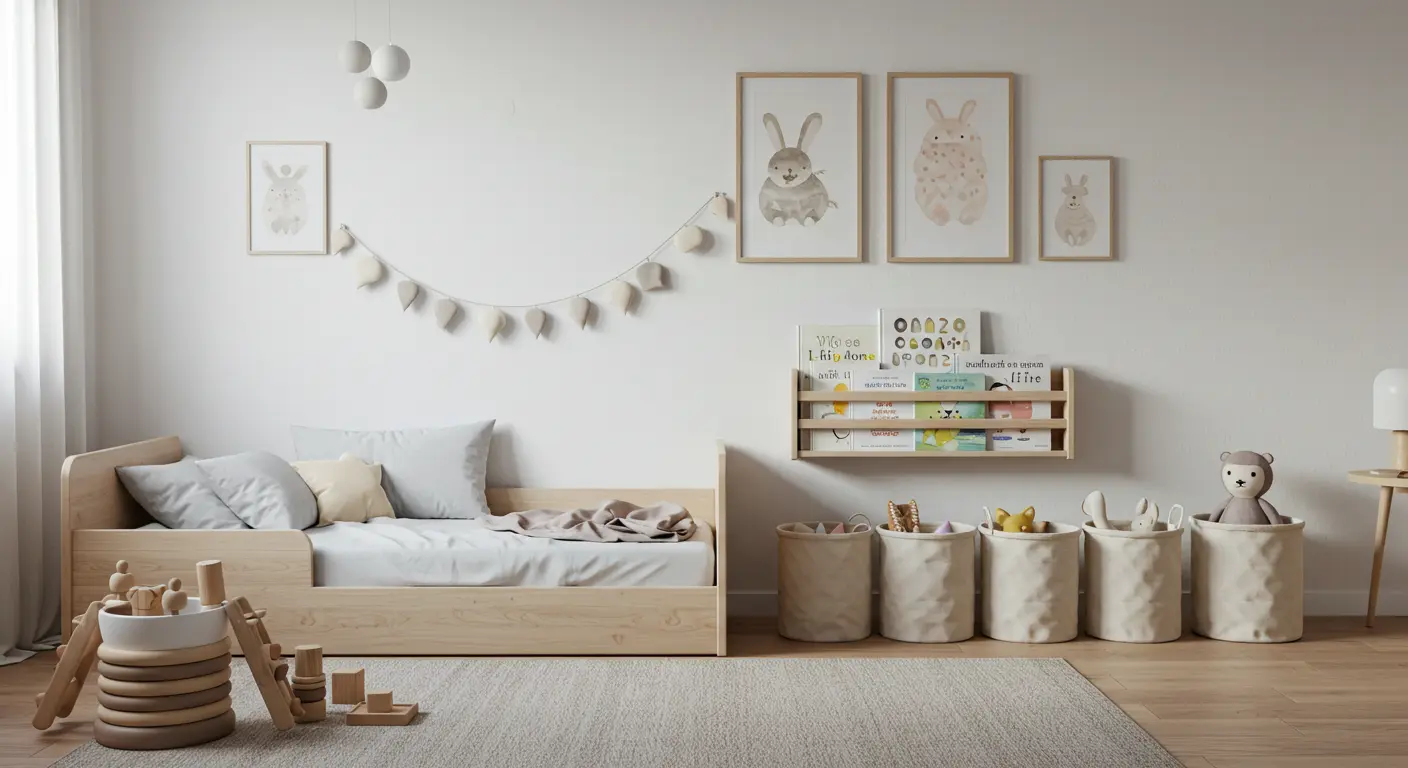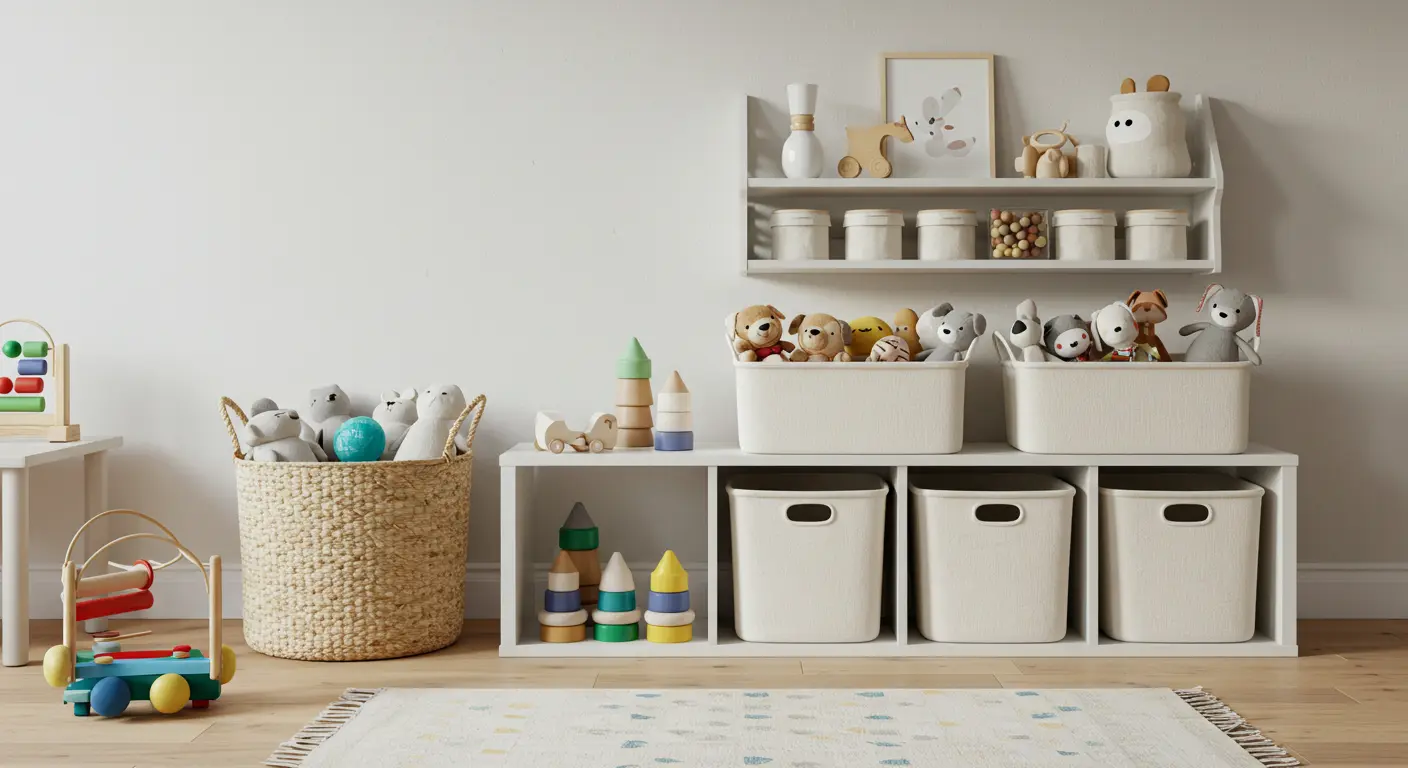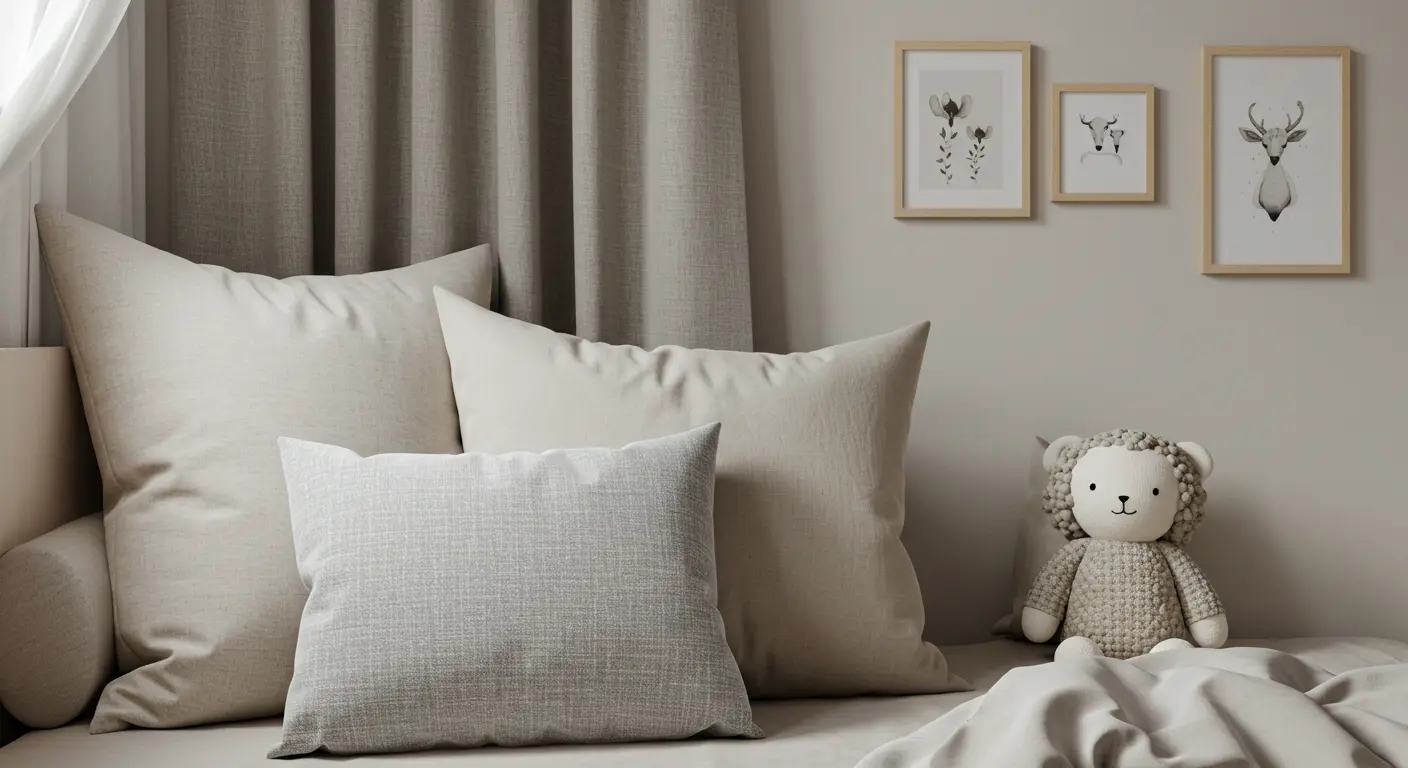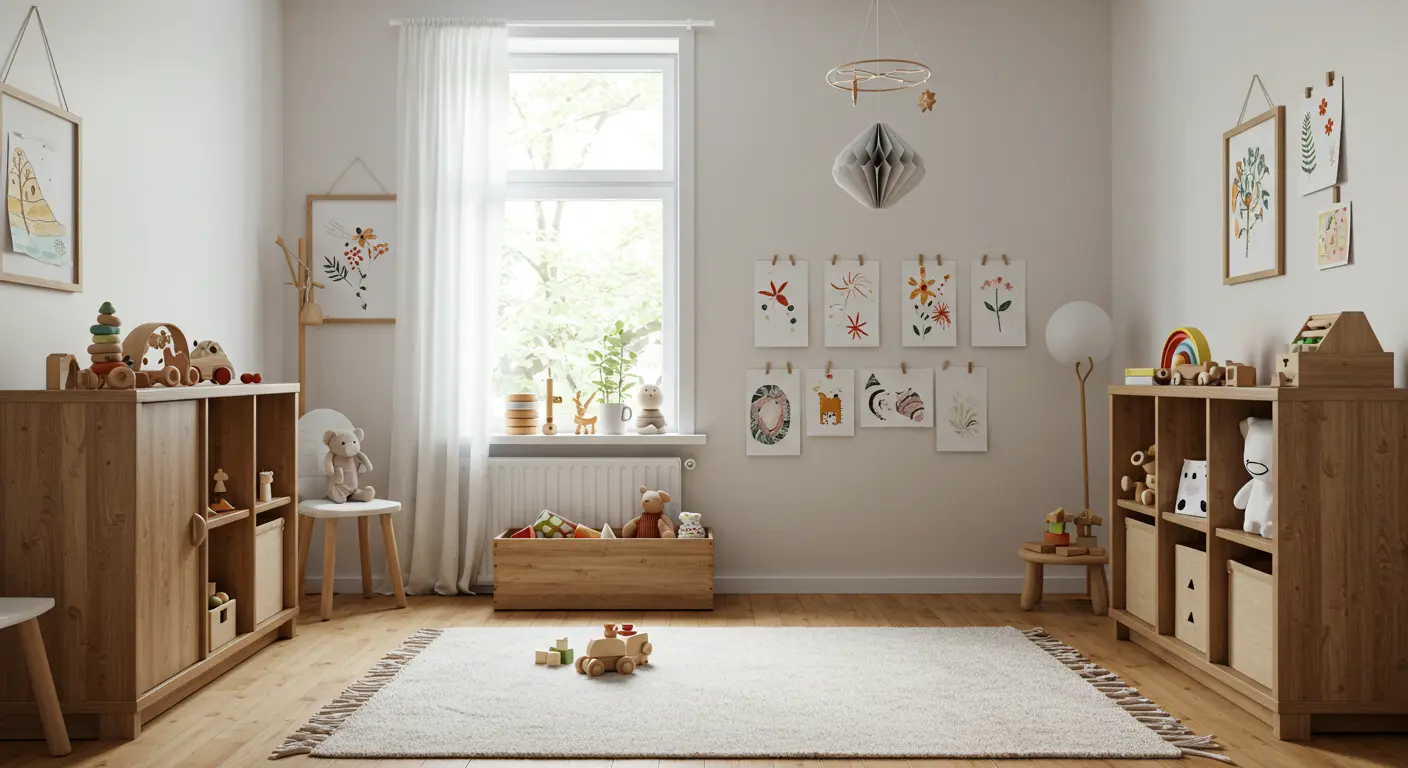
Creating a minimalist and functional children’s room might seem like a challenge for many parents dealing with limited space or an excess of scattered toys. The good news is that, with conscious furniture choices, strategic organization, and decor that values the essential, it’s possible to transform even the most compact environment into a true haven of well-being and creativity for the child.
In this complete guide, you will discover how to combine aesthetics, practicality, and comfort, creating a space that stimulates development, autonomy, and tranquility in daily life.
Why Choose a Minimalist Children’s Room?
Benefits for Child Development
Adopting the concept of a minimalist children’s room goes far beyond aesthetics. A simpler environment, with fewer visual stimuli and excessive objects, favors the emotional, cognitive, and motor development of the child. The absence of unnecessary distractions allows little ones to focus better on play, interactions, and their own learning process. Furthermore, an organized space contributes to a sense of responsibility and autonomy, as the child learns from an early age to care for and value what they have.
Less Visual Stimuli and More Concentration
In a world full of vibrant colors, electronic sounds, and flashy toys, the minimalist room becomes a true oasis of calm. Reducing visual stimuli helps the child develop focus and concentration, whether playing, studying, or relaxing. Neutral tones, natural textures, and few decorative elements provide a more serene environment, helping to regulate emotions and reduce anxiety.
Ease of Daily Organization
Another great benefit of minimalism in the children’s room is the ease of keeping everything in order. Fewer objects mean less clutter and more practicality when storing toys, clothes, and school supplies. This also facilitates the creation of organization routines with the child’s participation, teaching valuable lessons about responsibility and detachment. A clean and organized space not only improves aesthetics but also the quality of life for the entire family.
Why Choose a Minimalist Children’s Room?
Adopting the concept of a minimalist children’s room goes far beyond aesthetics. A simpler environment, with fewer visual stimuli and excessive objects, favors the emotional, cognitive, and motor development of the child. The absence of unnecessary distractions allows little ones to focus better on play, interactions, and their own learning process. Furthermore, an organized space contributes to a sense of responsibility and autonomy, as the child learns from an early age to care for and value what they have.
Benefits for Child Development
The room where the child spends most of their time directly influences their development. Minimalist spaces offer more freedom of movement, promote creativity, and encourage active play, without relying on ready-made stimuli or excessive toys. In addition, visual organization helps in building autonomy, as the child can easily identify where each object is stored and how they can help with tidying up.
Less Visual Stimuli and More Concentration
In a world full of visual and auditory information, a minimalist room transforms into a true haven of calm. Reducing the quantity of colors, patterns, and decorative objects creates an environment that promotes focus and concentration. This is especially important during moments of study, reading, or rest. Investing in a palette of neutral tones, natural textures, and simple-lined furniture helps create this atmosphere of tranquility so necessary for children’s well-being.
Ease of Daily Organization
With fewer objects to tidy up, maintaining organization becomes much simpler. In addition to optimizing parents’ time, a minimalist children’s room also facilitates the child’s participation in daily organization tasks. Creating simple storage systems, such as baskets, niches, and labeled boxes, makes the process educational and fun. This routine of constant organization helps develop a sense of responsibility, care for belongings, and even the practice of detachment naturally.
Planning: How to Define the Child’s Needs
Before starting any changes in the children’s room, it is essential to understand the child’s real needs. A minimalist and functional room does not follow a unique pattern: it should reflect the child’s life stage, their daily activities, and even their personal preferences. Careful planning avoids unnecessary purchases and ensures that every element of the environment has a clear purpose.
Age and Development Stage
Each phase of childhood requires a different type of environment. A baby needs a safe space, with accessible furniture for parents and soft decor that stimulates comfort. Preschoolers need areas to play and explore freely, while older children need a study corner that promotes concentration. Evaluating the development stage is the first step to creating a room truly adapted to current needs, but also allowing for future adjustments.
Main Functions of the Room: Sleeping, Playing, Studying
Defining the main functions of the room helps guide all layout, furniture, and decor choices. In small environments, it is often necessary to integrate sleeping, playing, and studying areas into a single space. Therefore, prioritize multifunctional solutions, such as beds with drawers, organizing shelves, and folding tables. The goal is to create well-defined zones, even in a compact room, so that each activity happens comfortably and organized.
Child’s Preferences: How to Include Their Opinion
Even in minimalist projects, it is essential that the room reflects the child’s personality. Including the little ones in the selection process – whether of colors, themes, or decorative details – makes them feel part of the environment’s transformation. Ask what their favorite colors are, what toys are essential, and encourage participation in decisions. This strengthens the emotional bond with the space and increases the chances that they will take better care of their own room.
Choosing Functional and Versatile Furniture
When it comes to a minimalist children’s room, furniture choices make all the difference. Instead of bulky pieces with limited functions, the ideal is to invest in intelligent solutions that offer practicality, flexibility, and maximum space utilization.
Bed with Storage, Bunk Bed, or Montessori?
The choice of bed is one of the most important points in planning. Models with built-in storage or drawers are perfect for optimizing storage in small rooms. Montessori-style beds, close to the floor, are great for stimulating the autonomy of young children and ensuring safety. Bunk beds are an excellent solution for those who need to accommodate more than one child in the same environment, freeing up space for other activities.
Easily Accessible Wardrobes and Shelves
Another fundamental aspect is ensuring that the child can access daily items on their own. Wardrobes with low shelves and open shelves are great for organizing books, toys, and clothes in an accessible way. This autonomy not only facilitates the routine but also stimulates a sense of responsibility. An extra tip is to opt for furniture with a clean design and straight lines, reinforcing the minimalist aesthetic.
Furniture that Grows with the Child: Smart Solutions
Investing in modular furniture or furniture that can be adapted over the years is a smart way to save money and avoid excessive consumption. Height-adjustable tables, beds that transform into sofas, or desks that grow with the child are great options. In addition, choosing durable and quality materials ensures that the furniture remains functional for much longer, reducing waste and aligning the project with the concept of sustainability.
Read also: Multifunctional Furniture: The Ideal Solution for Small Apartments
Smart Organization: Fewer Toys, More Practicality
Keeping a child’s room organized might seem like an impossible mission, but with a minimalist approach and some simple strategies, it is entirely feasible to transform even the smallest spaces into practical and pleasant environments.

Toy Rotation Techniques
One of the most effective ways to reduce clutter and stimulate a child’s interest in toys is to adopt the rotation technique. Instead of leaving all toys accessible at the same time, set aside a small selection to be within the child’s reach and store the rest in organized boxes. Every week or fortnight, swap out the available items. This practice keeps the environment visually clean, avoids overstimulation, and renews the child’s interest in playing.
How to Categorize and Store Items Visually and Accessibly
Organizing toys by categories helps create a functional and easy-to-maintain system. Separate items by type – such as building blocks, books, dolls, and art supplies – and use baskets, boxes, or niches to store them. Choosing transparent organizers or those with visual labels (like images for children who can’t read yet) facilitates identification and encourages the child to put objects back in the right place after use.
Utilizing Vertical Spaces and Niches
When space is limited, walls can become great allies in organization. Install low shelves for books, hooks for hanging backpacks, and suspended baskets for small toys. Wall niches are also excellent for creating storage areas without occupying floor space. This solution keeps the environment clear for circulation and play, and contributes to the clean and organized aesthetic characteristic of the minimalist style.
Color Palette and Minimalist Decorative Elements
In a minimalist children’s room, the choice of color palette and decorative elements plays a fundamental role in creating a welcoming, functional, and visually light environment. The idea is to convey calm and simplicity, without sacrificing personality and coziness.
How to Use Neutral Tones Without Making the Environment Cold
Opting for neutral tones like white, beige, light gray, or pastel shades is one of the main characteristics of a minimalist room. However, to prevent the environment from feeling impersonal or cold, the tip is to focus on combining textures. Materials like natural wood, cotton fabrics, and natural fiber rugs bring warmth and comfort to the space. Another simple trick is to add soft pops of color, such as cushions, framed art, or a small colorful piece of furniture, always in soft and harmonious tones.
How to Use Neutral Tones Without Making the Environment Cold
Opting for neutral tones like white, beige, light gray, or pastel shades is one of the main characteristics of a minimalist room. However, to prevent the environment from becoming impersonal or cold, the tip is to combine textures. Materials such as natural wood, cotton fabrics, and natural fiber rugs bring warmth and comfort to the space. Another simple trick is to add soft touches of color, such as cushions, paintings, or a small colorful piece of furniture, always in soft and harmonious tones.

Touches of Personality: Posters, Cushions, and Natural Fabrics
Even with a neutral base, the room can (and should) reflect the child’s personality. Small decorative details make all the difference without overwhelming the environment. Choose posters with delicate illustrations, inspiring phrases, or educational maps. Cushions with pleasant textures and natural fabrics like linen and cotton are great options to add charm and comfort without losing the minimalist essence. Another interesting feature is to use fabric pennants or handmade mobiles to bring lightness and movement to the decor.
Soft and Comfortable Lighting: Tips for the Children’s Room
Lighting is one of the most important elements to ensure a cozy environment. Prefer indirect lights, with a warm color temperature (around 2700K), to create a relaxing atmosphere. Wall lamps, dimmable bedside lamps, or built-in LED strips are great alternatives to control light intensity throughout the day. If possible, make the most of natural light, leaving light and translucent curtains that allow light in but protect against excessive brightness.
Read also: How to Use Colors to Create Minimalist and Cozy Environments
How to Adapt the Room to the Child’s Growth
One of the most important principles of minimalism applied to the children’s universe is flexibility. The room should follow the natural changes that occur as the child grows, always respecting their new needs and interests.
Modular and Reconfigurable Furniture
Investing in modular furniture or furniture that can be easily reconfigured is a smart solution to ensure the room remains functional over the years. Dressers that can transform into study desks, beds that adjust to the child’s height, and shelves that change position are examples of versatile choices. In addition to saving resources, this approach avoids the need for major renovations whenever a new phase begins.
Study and Creativity Space
As the child grows, new demands arise, such as the need for a suitable place to study, draw, or perform creative activities. Reserve a corner with an adjustable table and a comfortable chair, always maintaining the principle of organization and functionality. Shelves for school supplies, boxes for art items, and an inspiration board can be part of this area without overwhelming the environment.
Decor Updates Without Excessive Consumption
Over time, it is natural for the child to want to change some elements of the room. A good strategy is to adopt a neutral and timeless base in the decor, allowing subtle updates over the years. New cushions, a different poster, or a renewed bedspread are enough to give the space a new look, without the need for large expenses or accumulation of unnecessary items.
Sustainability and Conscious Consumption in Children’s Decor
A minimalist children’s room can (and should) also reflect values of sustainability and conscious consumption. In addition to contributing to the environment, this approach teaches valuable lessons about responsibility and care for natural resources from an early age.

Choice of Natural and Non-Toxic Materials
Opt for furniture and decorative objects made with natural, durable, and toxic-free materials. Certified wood, paints with low VOC (volatile organic compounds), organic cotton fabrics, and natural fibers are choices that ensure a healthier environment for the child. In addition, these materials reinforce the minimalist aesthetic with textures and soft tones that bring coziness to the space.
Second-Hand and DIY Options
Second-hand furniture and accessories can be an excellent alternative for those looking to reduce the consumption of new resources. Restoring an old dresser, repurposing a bookshelf, or creating decorative items with DIY (do it yourself) techniques are creative and sustainable ways to set up the children’s room. In addition to being economical, these solutions bring personality and history to the environment.
Education on Sustainability from Childhood
Including the child in the process of choosing and organizing room items is a great opportunity to introduce sustainability concepts. Explain the importance of taking good care of objects, donating what is no longer used, and valuing pieces made responsibly. Small gestures, such as separating materials for recycling or choosing sustainable toys, help build environmental awareness that the child will carry for life.
Checklist: Essential Items for a Minimalist and Functional Children’s Room
| Essential Item | Function | Minimalist Tip |
|---|---|---|
| Multifunctional bed | Optimize space | Models with built-in drawers or storage |
| Low shelf | Autonomy | Facilitate child’s access to objects |
| Organizer baskets | Toy organization | Prefer natural materials like cotton or wicker |
| Neutral color palette | Calm environment | Use shades of beige, light gray, and white |
| Soft lighting | Visual comfort | Lamps with warm light and dimmer option |
Conclusion: A Space that Grows with the Child and with You
Creating a minimalist and functional children’s room is much more than following a decor trend. It is a conscious choice that promotes well-being, development, and autonomy for the child, in addition to bringing practicality to the family’s routine. By prioritizing the essential, investing in smart solutions, and adapting the space according to growth phases, you will be creating an environment that truly makes sense for everyone.
Remember: every detail matters, and even the smallest adjustments can transform the daily lives of little ones. If this content inspired you, feel free to explore other ideas here at Minimals Vibe and continue discovering how minimalism can make a difference in every corner of your home.
